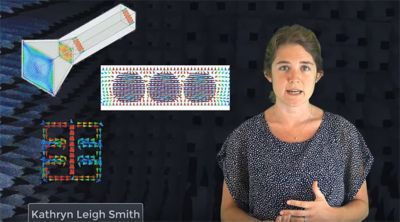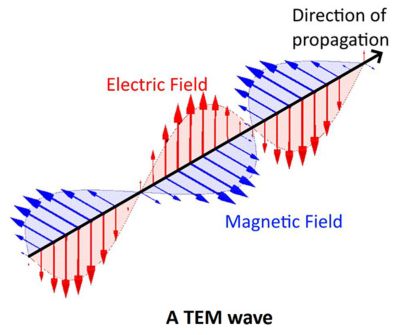Ansys Blog
November 19, 2020
Key to 5G: Plain Talk on Electromagnetic Plane Waves
5G networks and infrastructure continue to be built at an astounding pace to meet our mobile communication needs. This summer, research firm Gartner predicted that worldwide 5G network infrastructure market revenue will almost double in 2020 to reach $8.1 billion, and 5G investments are forecast to exceed LTE/4G in 2022. 5G networks use electromagnetic (EM) fields to transmit information, so students interested in 5G engineering opportunities should have a firm understanding of electromagnetic waves. The Ansys Innovation Course on electromagnetic plane waves is a great place to start.
Innovation Courses are designed for educators and students, and can be used by engineers who want to branch out of their current discipline or brush up on basics. There are already more than 50 courses available, and more are being added. The course content uses an Ansys simulation environment to present and reinforce physics fundamentals. Each Ansys course includes videos, handouts, practice problems and short quizzes.
The Electromagnetic Plane Waves Innovation Course is led by Kathryn Leigh Smith, Assistant Professor in the Department of Electrical and Computer Engineering at the University of North Carolina-Charlotte. She has experience teaching EM and has researched the development of EM meta-materials, as well as multiband and broadband antennas.
Assistant Professor Kathryn Leigh Smith uses simulations and other
visuals to teach the fundamentals of electromagnetic plane waves.
In her 14-lesson Innovation Course on EM plane waves, Smith’s goal is to help students develop an intuitive understanding of fundamental electromagnetic concepts by incorporating illustrative graphics, animations and field simulations to support the spoken and written lesson materials.
What Are Electromagnetic Plane Waves?
A plane wave is a simplified idealization of an electromagnetic wave used to develop a better understanding of electromagnetics. Engineers often use plane waves to derive general properties of EM waves because they behave exactly like a general wave, but are mathematically easier to handle because their variation has been constrained to a single dimension.
A plane wave is a transverse electromagnetic (TEM) wave that is constant, in both magnitude and direction, over a plane normal to the direction of propagation. A TEM wave is one in which the electric field and magnetic field are perpendicular both to one another, and to the direction of propagation. A plane wave’s magnitude, phase and orientation must depend only on the variables associated with the direction of propagation.
The Ansys Innovation Course on electromagnetic plane waves
includes a 43-page handout to accompany the video lectures.
Smith explains how plane waves are used to make derivations easier, highlighting the Poynting theorem, Snell’s Law and polarization characteristics. She also explains the power density of electromagnetic waves, propagation in a lossy medium, and reflection and transmission of electromagnetic waves at dissimilar dielectric boundaries. The course includes both practice and homework problems with solutions, as well as an online quiz that allows you to gauge your grasp of the material.
Get Electromagnetic Lessons on Track
The Electromagnetic Plane Waves Innovation Course can be taken separately or as part of the Fundamental Electromagnetics Learning Track. It starts by introducing the basics of vector algebra, which forms the foundation of electromagnetic theory, then introduces more advanced concepts, such as electromagnetics and magnetostatics. Together, the courses in the Fundamental Electromagnetics Learning Track form the basis for a broad overview of EM that can lead to more advanced learning.
5G networks promise to help expand the use of telemedicine, autonomous vehicle technology, the industrial Internet of Things, artificial intelligence, augmented reality and just about any other application that benefits from faster connectivity. Beyond 5G, EM theories and concepts will continue to drive our connectivity far into the future. The Ansys Innovation Courses are a great, free resource to help you understand the engineering and simulation behind today's most innovative technologies and applications.


